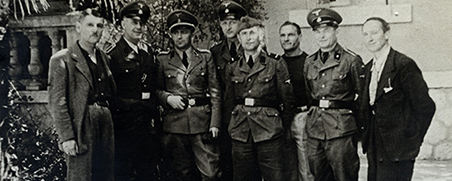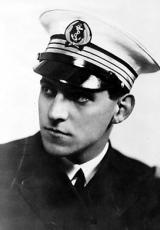The services of German repression in Occupied France
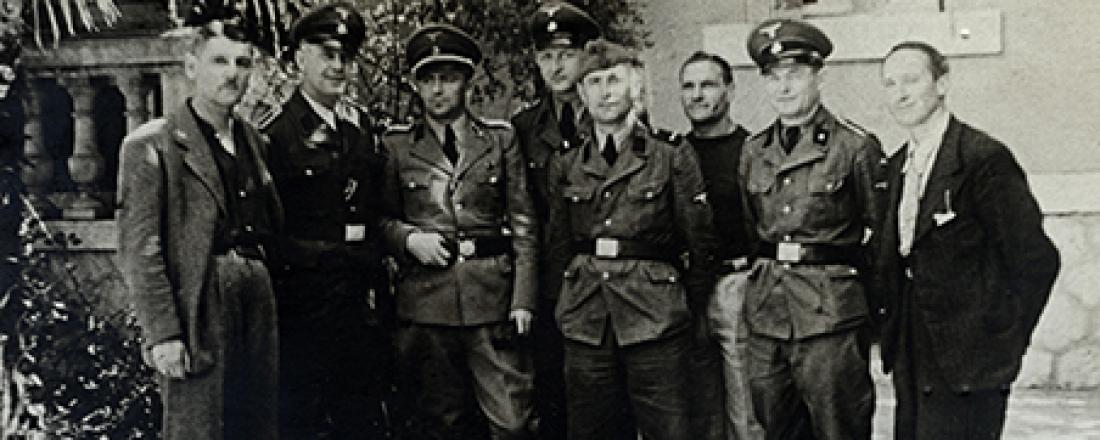
In his pioneering book France in Hitler's Europe, the German historian Eberhard Jäckel recalled a conversation during which Pierre Laval, ”one day when a German negotiator indicated that the Reich was an authoritarian state, replied, very much to the point: 'And how many authorities!'.” Because there were a multitude of services of German repression in occupied France. Their organisation and prerogatives evolved over time.
Military administration, diplomats in the Reich's foreign affairs ministry, Nazi police services reporting to the RSHA (Reichssicherheitshauptamt, the Reich central security office) and German counter-espionage agents operated simultaneously in occupied France from 1940 to 1944 and shared their responsibilities. Let us present the services of repression and counter-espionage.
The forces of order of the military administration
The Militärbefehlshaber in Frankreich (MBF) in Paris was given responsibility in 1940 for administering an ”occupied zone” covering three-fifths of the country. In decision-making and executive terms, the MBF, under the authority of the army staff (Oberkommando des Heeres, OKH) and then the Supreme Commander of the Armed Forces (Oberkommando der Wehrmacht, OKW) was the primary player until June 1942. He was responsible for maintaining order and conducting repression.
The occupier's main police forces, the Feldgendarmerie (see slideshow) and the Geheime Feldpolizei (the GFP, the rural secret police, see slideshow), but also the security troops, the Landesschützenbataillone and Sicherheitstruppen, were monitored by the MBF command staff (the Kommandostab). The MBF command staff were responsible for maintaining order, counter-espionage and military justice and produced regular situation reports. Section Ic of the Kommandostab monitored political affairs and all activities carried out against the occupying power. It was responsible for the Leitender Feldpolizeidirektor (senior director of the military police), who commanded the GFP groups assigned to the MBF. Section Ia took charge more specifically of military security issues and the Feldgendarmerie; its sub-section Ia/Terr was responsible for carrying out prosecutions and preventive detention. Section III, the Kriegsgerichtsabteilung (the war tribunal section), monitored and controlled the activity of the military tribunals (Feldkriegsgerichte). But the administrative staff of the MBF, the Verwaltungsstab, also played an essential role in security terms, and especially the administrative section led until June 1942 by Werner Best, an early Nazi. His police group (V2 pol) was tasked with preparing directives, decrees and orders and controlling the French forces of order.
In this system, the men of the Feldgendarmerie, with their multiple tasks (checking movements and papers, overseeing the French forces of order etc.), were the most numerous - there were 6,000 at the end of 1941. The security troops (Landesschützenbataillone and Sicherheitstruppen) were chiefly responsible for monitoring sensitive points, the primary communication infrastructure and the German internment camps.
But it was the GFP that was in charge of major judicial investigations against the Resistance. Its men were career policemen, most from the criminal police, mobilised and transferred to these units after a short period of training. Twenty groups - each consisting of about a hundred men from February 1941 - patrolled the occupied zone, six of them in the Paris region. Each unit was commanded by a Feldpolizeidirektor assisted by two or three Feldpolizeikommissäre, five to seven Sekretäre and two Sonderführer (who often acted as interpreters). They were served by about twenty typists and orderlies and as many drivers. The actual police officers numbered no more than 45.
In total, the staff of officials and police forces dedicated specifically to keeping order consisted of only about 21,000 people in March 1942, a small minority of them officers, to the extent that the military command often complained about staff shortages.
The Abwehr
In planning its work, the GFP was guided by the Abwehr. Although this branch of the German intelligence service in France was officially attached to section Ic of the Kommandostab, it nevertheless reported directly to the OKW for its espionage missions. Section III was specifically responsible for counter-espionage and its role in repression was crucial. Until at least the summer of 1942, the Abwehr was the primary player in the struggle against the first resistance groups. The GFP served as its armed wing.
The Abwehr is doubtless the least known of the German services, and the details of its operations in the occupied zone even less. It was divided into three sections. Abteilung I constituted the actual intelligence service, responsible for military, political and economic espionage. Abteilung II was in charge of subversive operations (spreading false news, supporting dissident tendencies in the enemy etc.), infiltration and sabotage. Abteilung III was the counter-espionage and military security section: members of this section were tasked with infiltrating and bringing down resistance groups in occupied France. The biggest sub-section of Abteilung III was III-F, whose role was to search for enemy agents and penetrate the opponent's special services. It included a radio direction-finding service.
Colonel Friedrich Rudolf, a brilliant officer and a friend of Admiral Canaris, the head of the Abwehr, took charge of the Kommando sent to France.
He arrived with two of his long-term colleagues: Colonel Arnold Garthe, who would be appointed to the head of Abt II in France, and Lieutenant-Colonel Reile, then aged 54, a career policeman who took the leadership of section III-F. From 1940 onwards, they commanded nearly 200 agents.
As well as the Paris post, three further posts (Abwehrstelle or Ast, which could be divided into local branches, Nebenstelle, Nest) were quickly established in the occupied zone. The first was at Saint-Germain-en-Laye. The Angers post, created at the end of June 1940, was managed by Major Friedrich Dernbach (see slideshow). It was he who arrested Honoré d'Estienne d'Orves at the beginning of 1941. Major Otto Ehinger set up a post in Dijon at the end of July 1940. Specific branches were also set up, e.g. in Besançon to monitor the Swiss border and in Bordeaux to ensure the security of the city's important submarine base. These different posts used cover to hide their location. The Nantes branch, for example, was disguised as a works contractor, Bordeaux as an accounts service and Tours as a European transport service. From November 1942, after the occupation of the southern zone, the Abwehr deployed agents here too - the experienced Dernbach worked in Lyon.
La SIPO-SD
When the Nazis came to power in 1933, each German region had its own police to maintain everyday order. The Geheime Staatspolizei (the Stapo or Gestapo, see slideshow), a more political and secret police force, made its appearance first in Prussia on the initiative of Hermann Goering, one of the Nazi leaders. Gradually, several other Länder (states) set up their own Gestapo. In 1936, all these police forces were unified under the leadership of Heinrich Himmler, also the head of the SS (Schutzstaffeln or ”protection squadrons”, the armed wing of the Nazi party). The Reich state police was now divided into two main branches, the Ordnungspolizei (the Orpo, the uniformed police who maintained everyday order in the towns and villages) and the Sicherheitspolizei (the Sipo), which was further divided into the Kriminalpolizei (the Kripo, the criminal police responsible for common law crime) and the Geheime Staatspolizei (the Stapo or Gestapo, the political police). The latter was responsible for repressing acts of high treason and espionage. It monitored public opinion and political activities, watched the borders and checked the files of concentration camp internees.
But within the Nazi party, the SS also had a security service, the SD or Sicherheitsdienst, whose role was to collect information about their enemies. In 1939, Himmler brought most of the police forces and the SD together in the Reichssicherheitshauptamt (Reich Central Security Office, RSHA). From this point on, we refer to the SIPO-SD, Sicherheitspolizei und Sicherheitsdienst, the state security police and the Nazi party security services, placed under the orders of Reinhard Heydrich. The public order police, the Orpo, remained outside the RSHA. The SIPO-SD quickly made its presence felt with its methods. It quickly triumphed over the law, or rather engulfed it, because its official disguises remained to legitimise the actions of a political police force charged with applying Nazi doctrine and imposing a reign of terror.
Heydrich dispatched his men to occupied France as early as the invasion to target the Reich's enemies: communists, Freemasons, Jews and emigrant German political opponents. Due to this mission, the small detachment led by Helmut Knochen was mainly composed of SD men.
In March 1942, Hitler changed strategy and made the SIPO-SD responsible for repression. Its numbers expanded, incorporating GFP police officers, but never exceeded 3,000 men. A chief SS and police officer (Höherer SS und Polizeiführer, HSSPF), Karl Oberg, headed the new organisation. Knochen became BdS (Befehlshaber der Sipo und des SD). Six main sections structured the operations carried out: section VI was still the intelligence branch and V the Kripo and common law crime section, while IV - the Gestapo - was divided into several sub-sections fighting communism (IV A) or ”national resistance” (IV E). After the invasion of the southern zone, 17 regions led by Kommandeur der SIPO-SD patrolled the territory and deployed BdS sections.
The order to withdraw did not come until mid-August 1944, but new SIPO-SD detachments were reformed in eastern France behind the front line until the autumn to hunt the Resistance until the last moment.
Thomas Fontaine
Historian, research associate at the Twentieth-Century History Centre, Paris 1
FOR MORE INFORMATION
The archives on the organisation and staffing of the German special services are conserved in sub-series GR 28 P 7.
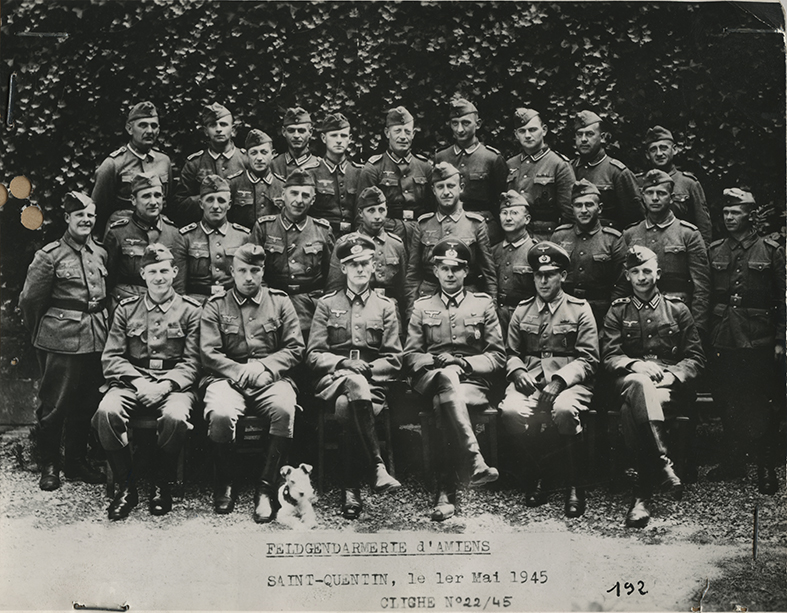
Membres de la Feldgendarmerie d'Amiens photographiés à Saint-Quentin le 1er mai 1943.
© SHD
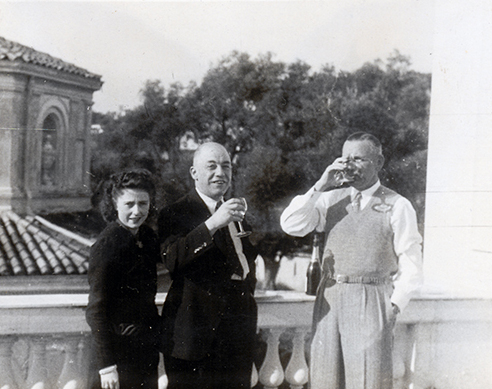
Friedrich Dernbach (au centre), chef de l'Abwehr d'Angers dès 1940. En poste à Lyon en 1943-1944.
© SHD
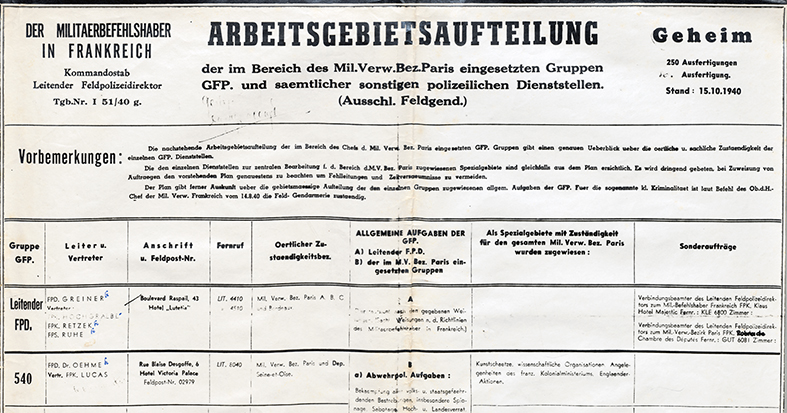
Organigramme de la GFP, sans date.
© SHD
